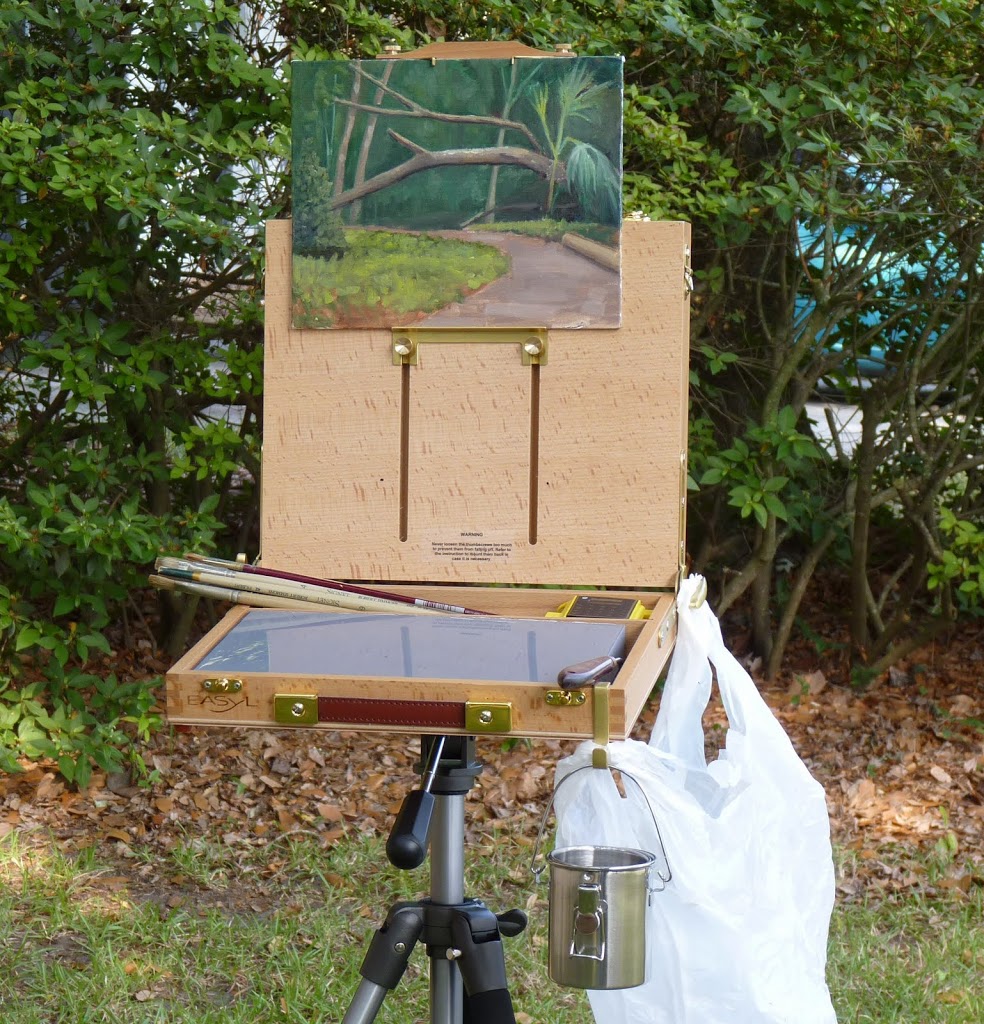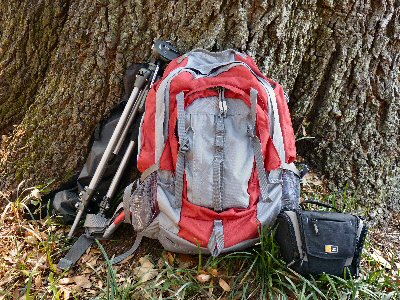Plein air painting requires light weight and portable gear. Only essential materials should be taken on a painting excursion. Carrying excess weight can limit the distance hiked, and make it more tiresome.
The following painting gear fits easily into a Kelty Redwing 2650 backpack. It has adjustable straps, hip pads, flexible spine, and numerous pockets.
- EasyL Lite 10×12 painting box with tripod
- Painting panels of primed wood or linen 6×8, 8×10, 9×12
- Palette in mid-gray for mixing colors, sometimes disposable sheets
- Flexible small painting knife, large palette knife, and a razor scraper for cleaning off the palette
- Brushes, mostly Robert Simmons Signet natural hog bristles, some nylon in flats, filberts, rounds and liner
- Paints in 2 oz studio size tubes, mostly Golden Heavy Body Acrylics
- Yellow ochre, cadmium yellow light or hansa light
- Alizarin crimson permanent, cadmium red light
- Ultramarine blue, Prussian blue or phthalo blue (green bias)
- Burnt sienna, burnt umber
- Titanium white, mars black
- Glazing medium, heavy gel, and sometimes retarder in sealable cups
- Spray bottle mister with distilled water
- Solvent jug with leakproof lid filled with water for cleaning brushes
- Facial tissue to wipe off brushes and palette
- Plastic bags to dispose of waste
- Viewfinder to aid in composition and value matching
- Leatherman multi-purpose tool
- Miscellaneous like sunscreen, hand cleaner, bug spray, clips, bungy cords, etc.
I also include drinking water, a sandwich or snack, and a small first-aid kit. It’s important to dress in layers to accommodate any weather shifts, to have sturdy hiking shoes or boots, and to wear a wide brimmed hat to protect your eyes and skin from the sun.

